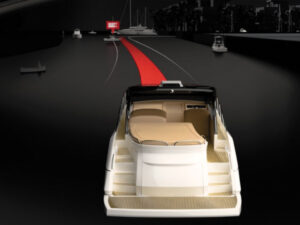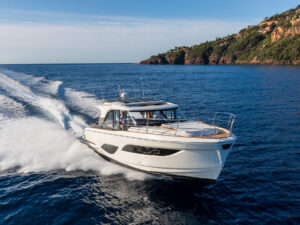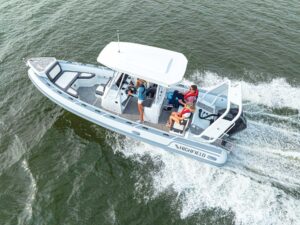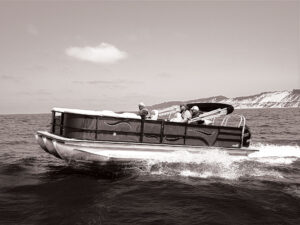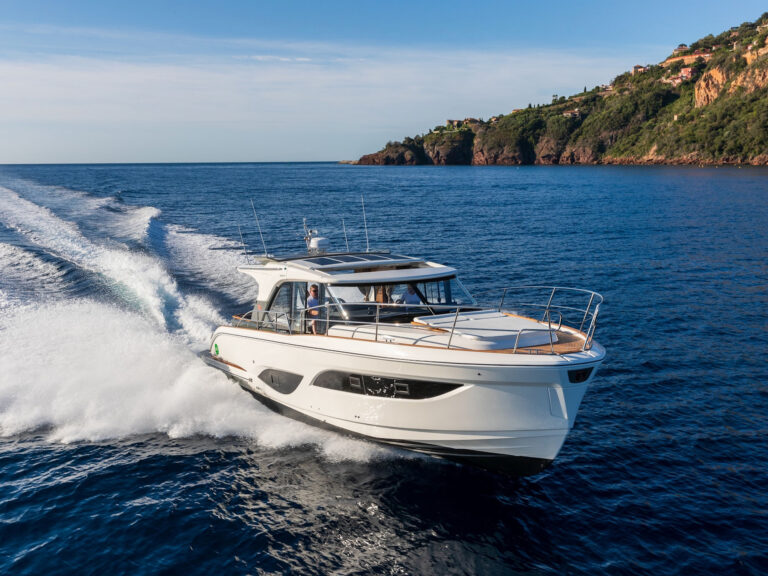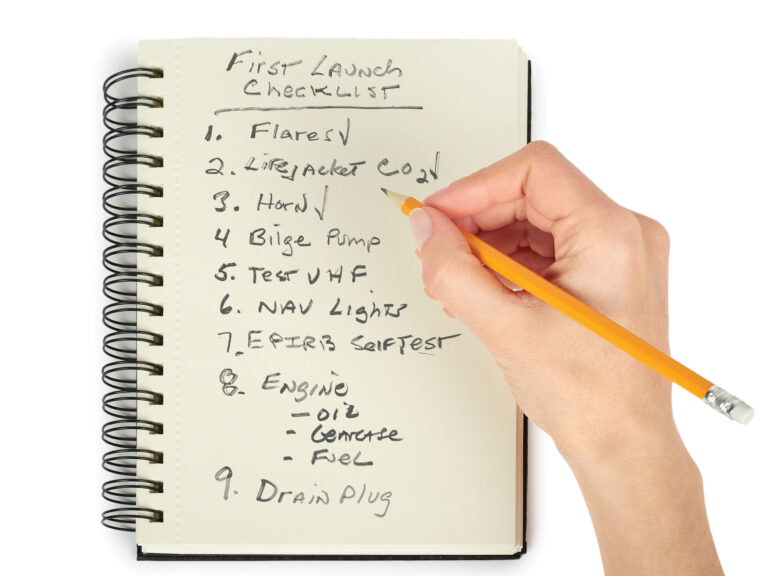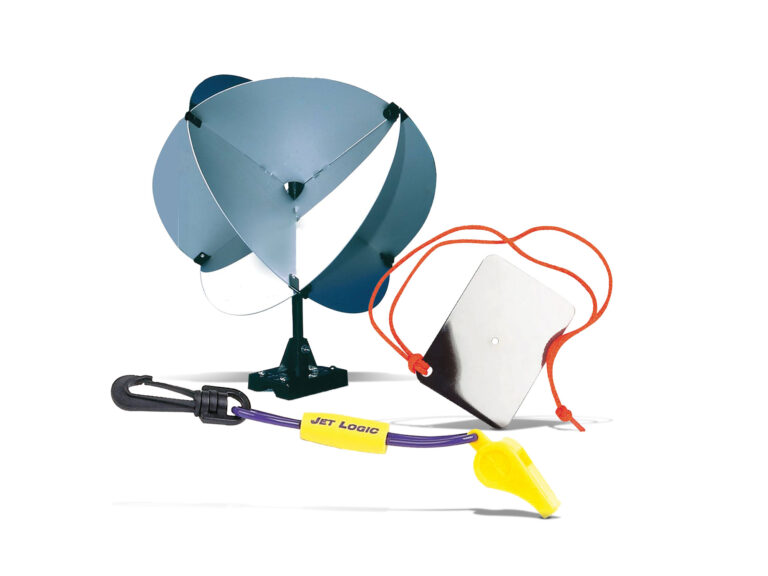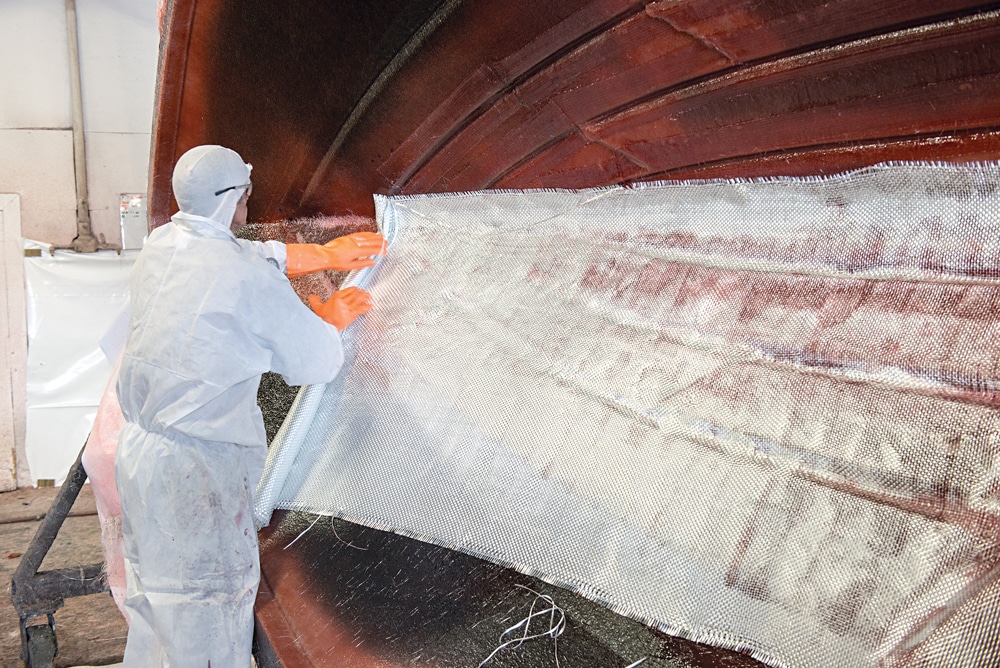
Boat Construction Comparison
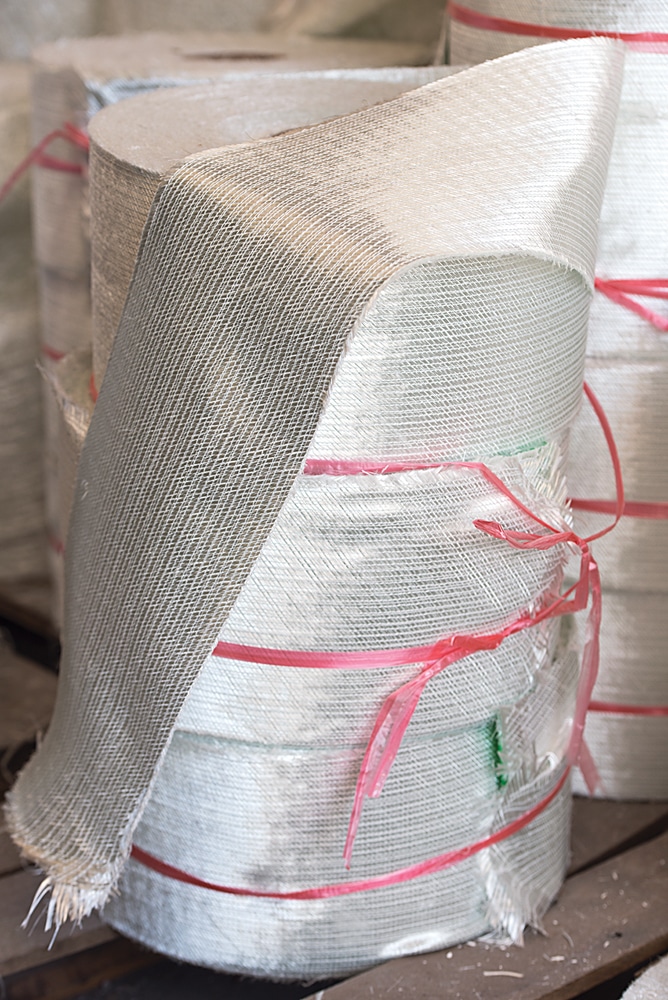
Boat Construction Comparison
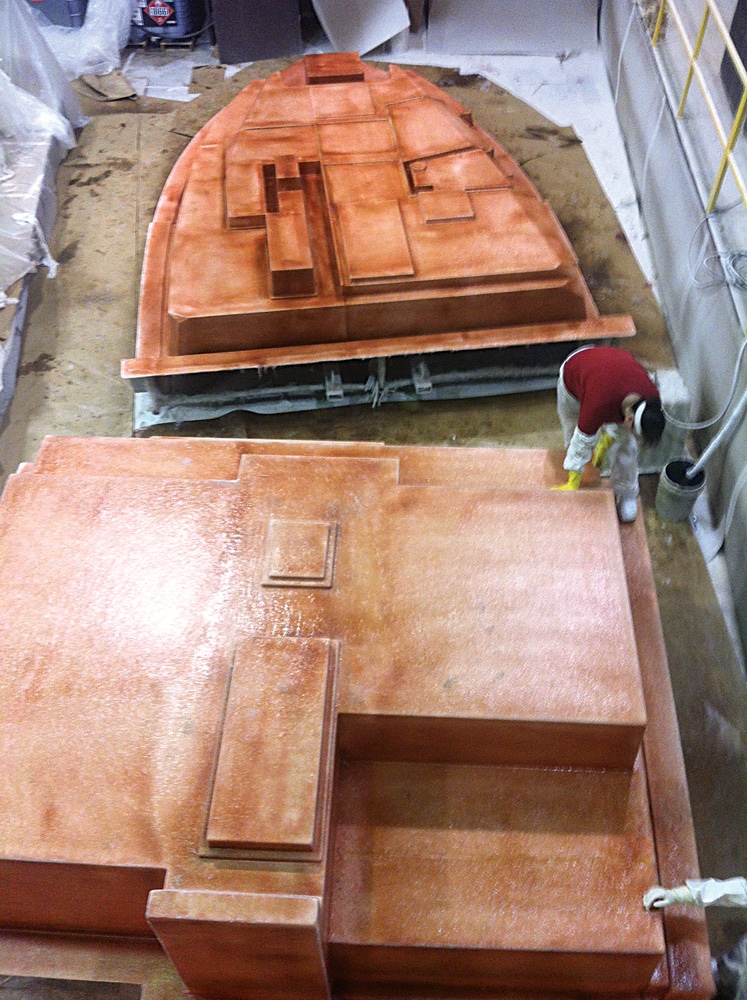
Boat Construction Comparison
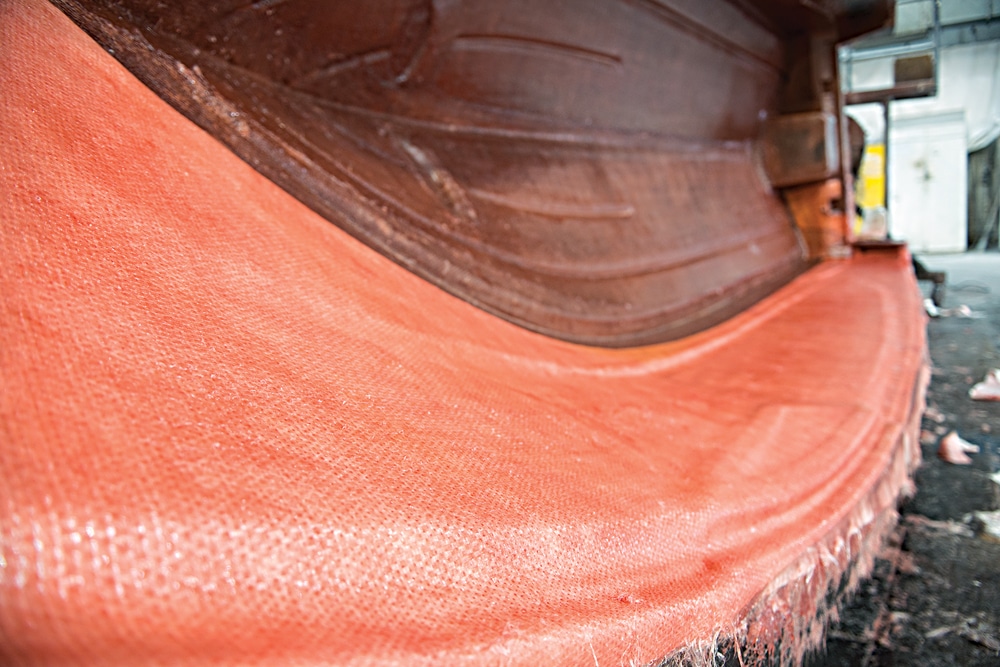
Boat Construction Comparison
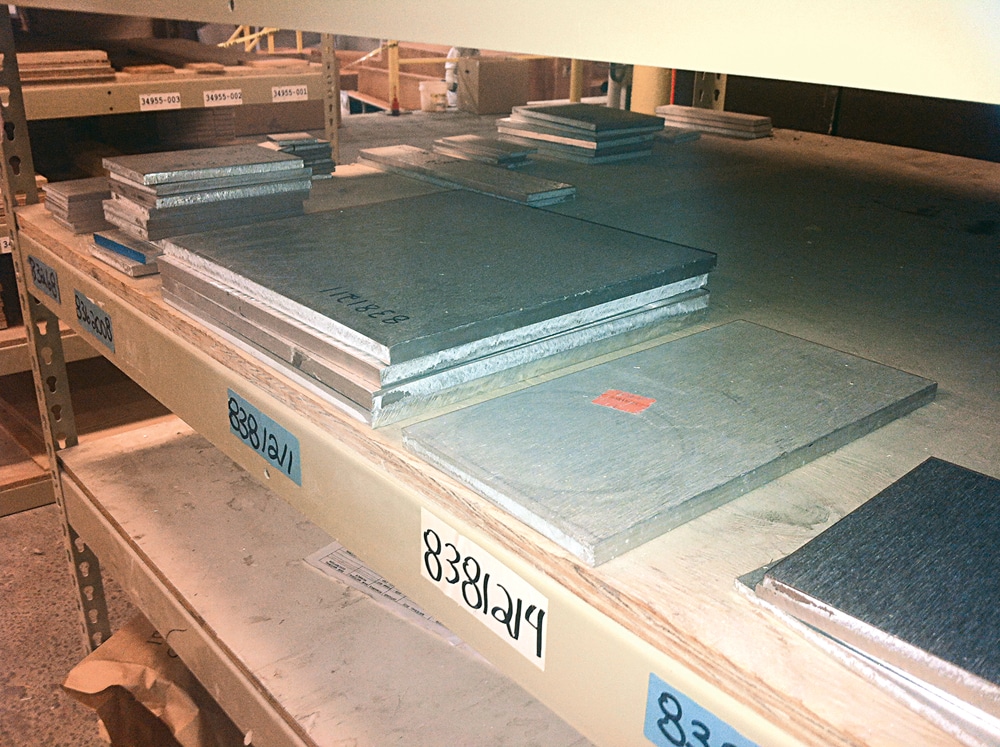
Boat Construction Comparison
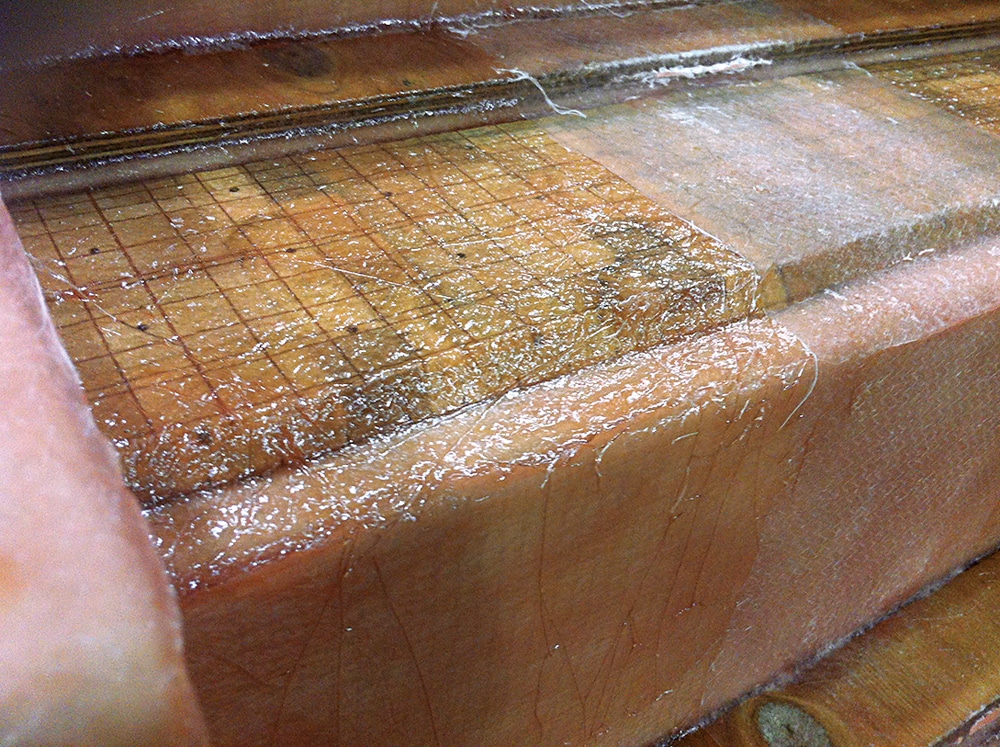
Boat Construction Comparison
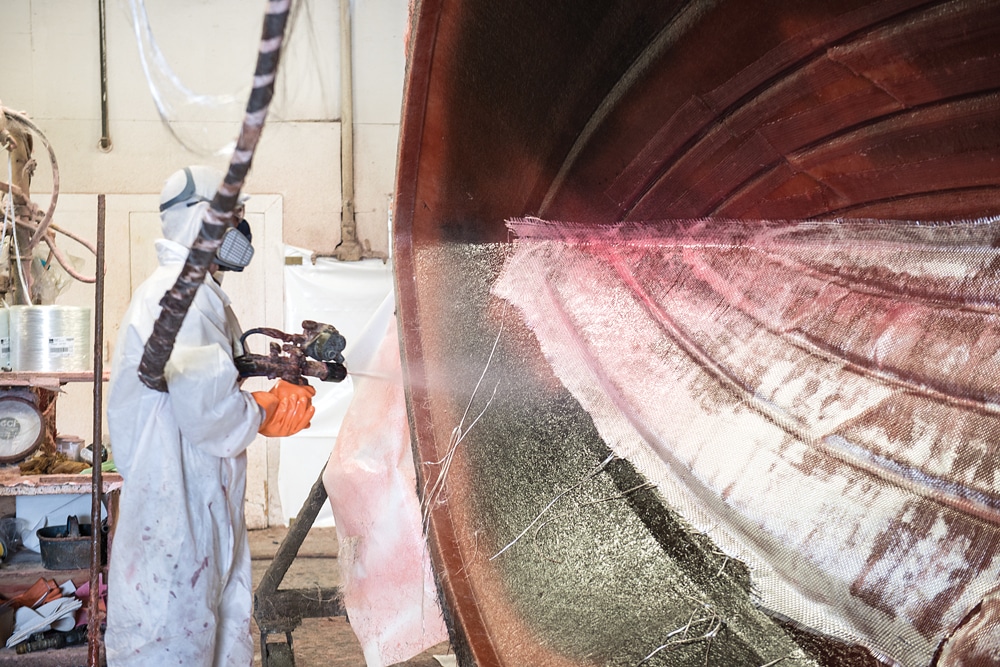
Boat Construction Comparison
Engineer and composites expert Rick Strand is president at Impact Matrix Systems, Hampstead, New Hampshire. He has worked for Boston Whaler, ITW Plexus and TPI Composites abd consulted for Baja, Sea Ray and others.
We take it that you know the basics, such as fiber provides the strength and resin provides the stiffness in a fiberglass laminate. And that composite is just a fancy term for a structure made from a combination of materials (hey, straw and clay bricks are “composite”). But can you sift through the rest of the jabber at a boat show?
The materials used to construct boats are varied in cost, application and how they perform. This primer is intended to help you sort the truth from the marketing mush and sales hype.
Fibers
Most boat hulls are made using either knitted or woven fabric created from glass fibers. In some fabrics, the fibers crisscross at 0- and 90-degree orientations (0/90). Other axial configurations include plus and minus 45 degrees and either 0 degrees or 90 degrees. The directionality of the fibers enables the engineer to orient them in the direction of the stresses applied to the hull at any location. So, the use of “0” or “+/- 45-degree” fiber doesn’t make a boat better; it simply designates the application.
Woven fabrics require simpler machinery to produce and are hence less expensive than knitted fabric reinforcements. With knits, fibers are laid flat on a surface (by machine) and are knitted through with a lightweight and tenacious fiber to hold them together. The fibers in knitted fabric lie almost absolutely flat.
Woven fabrics’ fiber bundles run over and under each other creating a bulkier material. As a result, there are several things to consider about a boat using woven fabric. First, as the hull ages in the sun, it can develop “print-through.” This condition manifests itself by visibly transmitting the fiber so that the finish is no longer smooth but appears slightly distorted in a crisscross pattern. This occurs because the resins in the hull composite shrink after sitting in the hot sun. This condition is seen in darker-color hulls (green, blue and black) more often because they can reach temperatures of more than 200 degrees F in the direct summer sun. White hulls may get to only 160 F because they reflect more of the sun’s rays. In addition, the dark, shiny colors show the condition more than a light color does because of the way they reflect light. Knitted fibers lie flat, have lower shrinkage stresses and will not produce the print-through condition.
From a structural standpoint, builders that utilize knitted fabric as their primary reinforcement will make hulls, decks and parts that are stronger and stiffer (given proper engineering) than those built with woven-fabric composites. The parts will also be lighter. For the same reason that columns supporting buildings are straight and not wavy, knitted fibers more effectively line up in the direction of applied forces while woven fibers line up like springs. They have less strength and stiffness when they are “off-axis” to the forces. In addition, woven fibers have wells of empty space between the weave that need to be filled with resin to produce the composite. Knitted fabrics have less of this space. Therefore, woven fabrics require more resin to wet out in production. The result is heavier, more structurally inefficient composites.
Finally, woven fabrics will last a shorter period of time before the composites break down and will fatigue from repeated stress (pounding and slamming) on the out-of-plane fibers (springs) formed by the weave. At the end of the day, a boat utilizing knitted fabrics and an equivalent structural design would last longer and experience less cracking. This is particularly useful in deck composites and internal components having odd or transitional shapes.
Backup Materials
From engines to cleats the problems that create the most headaches for owners are those associated with backing up hardware. There’s no reason to buy a new boat using plywood in the stringers or floor, as backups for cleats, in handrails, around hatches and, most of all, in the transom. In my many years of marine experience, I’ve learned that doing so will have you removing what little hair you may have left.
Plywood will get wet and rot. You will never be able to sink another new screw into it. Your transom will need to be replaced eventually and so will your stringers, toe rails, etc., etc. Don’t buy into it. Today, there are numerous alternative materials referred to as “boards” that are designed, engineered and produced for this purpose. If they get wet, they will not rot or lose properties. They will last longer and make your life easier as an owner. Many quality boats used plywood for many years because it was cheap, available and easy to cut and fit. Today, there is no excuse for it. Make sure a polymer backer board is used in your vessel. You will enjoy boating all the more for it. The risk of increased costs and lost time on the water associated with using plywood in a new fiberglass boat are far too high to buy one using them.
Resins
The resin used to build your boat holds everything together. Polyester resins are popular, but polyester is a generic term covering a vast array of brands and types, differentiated in both name and performance by the type of acid used to make each one. Those acids are orthophthalic, isophthalic and terephthalic. Orthophthalic acid is used to produce general-purpose marine resins. Isophthalic acid is used to produce a more chemical-resistant and slightly stronger grade. Terephthalic acid is not common in boats.
You’ll also hear “DCPD modified resin” bandied about. Without getting overly complicated, DCPD (dicyclopentadiene) is a big molecule. Within a polyester resin chain is the ester linkage — like a repeating linkage in a long chain. This linkage is a chemical bond that can be attacked by water over the long term. Eventually water can break this bond, starting a long-term degradation process that can lead to blistering or even your bottom cracking open. DCPD shields against water, rendering the ester linkage more stable in a wet environment. It also reduces the cost of the resin. Its downfall is its brittleness. It can reduce the crack resistance of your boat.
Also in this category are the vinylester resins. They are more expensive but do not have the ester linkage. Instead, they have an ether linkage, a more moisture-stable connector in the molecule. These resins have great chemical and moisture resistance. They are also much tougher and more flexible than the others. This means that design stress levels can be higher in the composites. This equates to a lighter, more durable boat that can take a beating and keep on ticking without cracking or breaking. Vinylesters are what gave us a revolution back in the early ’80s, when builders could begin to produce hulls that would not blister. Blistering, as you recall, is an indirect result of the ester linkages breaking in the presence of water. Therefore, vinylester resins are the resin of choice for the seeker of a trouble-free experience. You should make sure that your boat is produced with them if the boatbuilder works with polyester resins.
Epoxies are in a similar realm to vinylesters when it comes to performance in a marine composite, though you won’t find many production boats using it. It’s more fickle to use and more sensitive to heat, and some workers are allergic to it. However, if a custom boat is what you seek, it’s a fine alternative. And improvements in chemistry have helped overcome its manufacturing problems.
Generally, the higher-tech and lighter the construction, the more likely you are to find an epoxy choice in resin systems. Vinylester resin is the more likely to be used in a modern marine composite associated with a quality production-boat builder.
The most important consideration concerning all of the materials discussed is the quality of competence of the builders. This has been the biggest ball and chain ever dragged by the industry. Builders who do not have a quality manual probably don’t have a program, and if they don’t have a program (and I mean a good one), you will not have a trouble-free experience. Take it from someone who has done many a quality audit: It does not matter how good the materials are that you are buying. If you do not use them correctly and make sure that is the case every day, you cannot build a trouble-free boat. I do mean trouble-free for years. These days, the industry leaders are doing pretty well here. Many others still are not. The structural “guts” aspects of today’s boats are fairly good and well understood. All the other systems on a boat will need to be dealt with next. When that happens, your boat will be a lot like your car. It will be predictable, reliable and somewhat trouble-free.
Beyond Glass Fiber
Carbon fibers and aramid fibers are lighter than glass fibers and, in many configurations, stiffer and stronger too. But they don’t come cheap. Today, glass fiber may cost between $1.50 and $2.50 per pound, while carbon fibers may run in the pricier $18 to $26 per pound range.
Carbon has found strong application in boatbuilding, where aramid (such as Kevlar by DuPont) has been largely withdrawn from the marine market. This is partially because aramid fiber does not adhere well to most resins. Also, it has great tensile strength in the direction of the fiber, but it suffers when loaded off-axis at most angles to the fiber, as well as in compression.
A new technology about to make it to market could drastically improve these problems. This newer technology bonds fibers into a flat configuration that maximizes strength as well as the amount of fiber per unit thickness (in other words, heavier amounts of fiber in a thinner product). This allows lower resin use and lighter-weight construction. For the boat buyer, this can mean a faster and/or more fuel-efficient boat.
Cores
Learn More About Cored Composite Boat Structures
Talk about an area of contention over the years…core materials are it. Cores, including foams and balsa wood, are good materials. It is the way they are installed that can make them an owner’s nightmare. Today, improvements in closed molding techniques, like resin infusion, have bettered the quality of core installation. In the hand-laid days, a good installation was like pinning the tail on the donkey. Builders were blindfolded because they couldn’t see the “downside” of the core. The vacuum infusion process has improved core installations, performance and longevity. Both balsa and foam cores can be well produced and last for years. In terms of performance, a cored or sandwich composite is better than a solid composite with respect to strength-to-weight ratio. Cored composites yield lighter, faster and more fuel-efficient boats.
Do not be afraid of buying a new boat made with core materials, but do your homework in selecting your brand and what is behind it. And, FYI, most of those windmill blades you see spinning on the distant peaks are built using vacuum infusion with cored composites.

